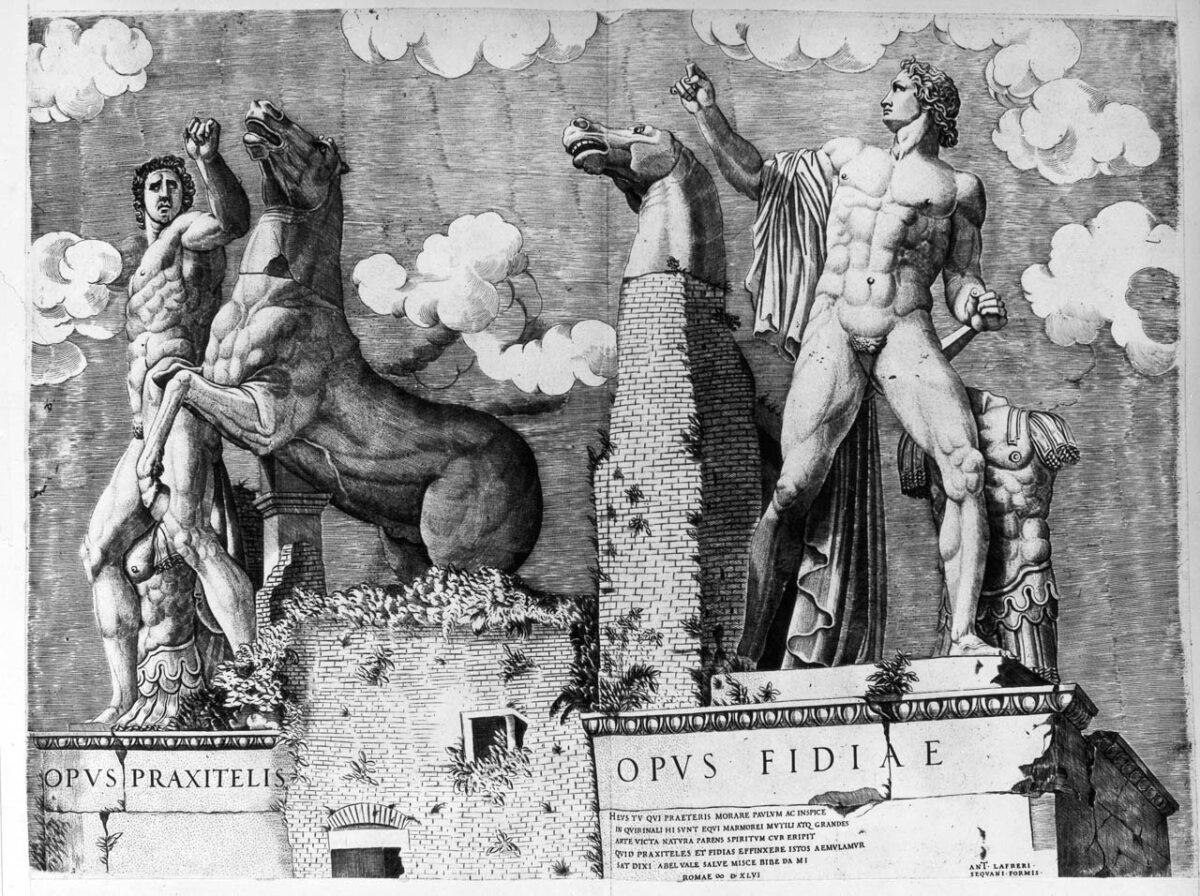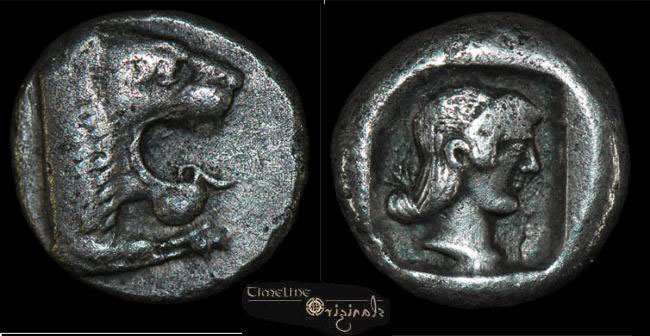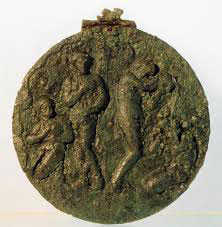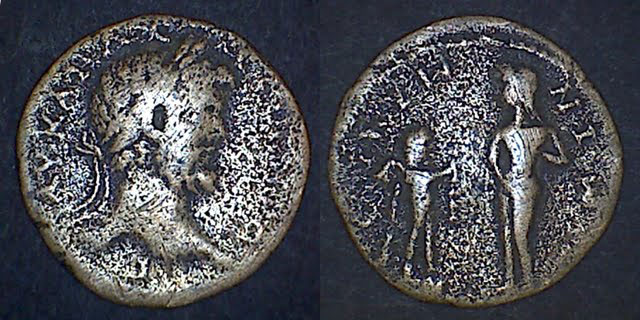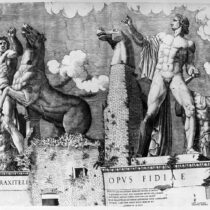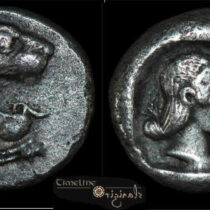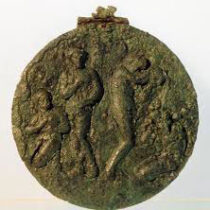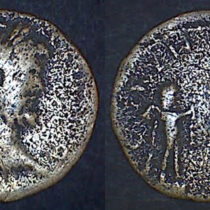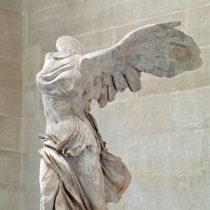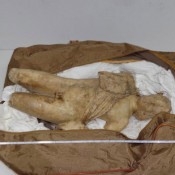An article entitled “Ο Πραξιτέλης μεταξύ αντιγράφων και πρωτοτύπων Αρχαία αντίγραφα των έργων του Πραξιτέλους” has been published in the periodical Θέματα Αρχαιολογίας, 5/3 (2021), σ. 367-386.
I wish to point out statements in this article which are both extremely idiosyncratic and even wrong.
At page 368 the author of this article provides the following chronology for the production of “Roman copies”: 1st c. BC and AD 1st to 3rd c. Thus he ignores that copying ancient masterpieces of the classical period goes out of fashion after the Antonine period, that is after AD 160-170. 3rd century copies are very rare (note 1).
He also claims (in the same page) that attributions of works known from Roman copies to classical artists known from written sources have been the main concern of the scholarship of Greek sculpture in the last century but this is hardly true: attributions went out of fashion already after WWI and the prevailing trend from around 1950 onwards has been concerned with the ideological and historical understanding of classical art (note 2).
In the same page he interprets ars of the cessavit ars of Pliny 34.52 as generically ‘art’ while it refers only to the ‘art of bronze’, since this section is included in the treatment of bronze sculpture (note 3). Moreover the author gives wrong dates to the 121st Olympiad which does not correspond to 298-295 BC but to 296-293 BC.
In the same page, the author attributes to Cicero and Asinius Pollio the purchase of copies from ‘ancient’ original works of art but this claim is unfounded.
Then (between pages 368 and 369) he claims that the copyist production continued for the whole duration of the Imperial period but this is not true: after around AD 170 new copies become rare.
In the same page, he claims that the two Dioscuri of Mt. Quirinal in Rome with labels attributing them to Phidias and Praxiteles enjoyed fame from the period of the Renaissance (!). What? First of all it has to be said that these labels are dated in the Constantinian period (CIL 6.2.10038) and that the statues probably pertained to the baths of Constantine on Mt. Quirinal (note 4). The statues with their labels were always visible throughout the middle age, so far to give a new name to the same hill, which by now was called ‘Mons Caballus’, with reference to the horses of the two Dioscuri (fig. 1). Thus they are mentioned in Mirabilia Urbis Romae 12, around 1150, and again by Petrarch, Rerum familiarum libri 1.1.37; 5.17.5; 6.2.13, and 18.5.4; De remediis utriusque fortunae, 1.41, and 2.88; Canzoniere 130; Seniles 2.3; and Africa 8.910., thus well before the Renaissance. This mistake is an ugly one. The author dates the Dioscuri to the Severan period but on the contrary they are dated by the most authoritative scholarship to the late Antonine one (note 5).
The author at page 370 defines the bronze Sauroctonus at Cleveland a ‘copy’ but the identification of this statue as Praxiteles’ original statue is at least probable (note 6). He mentions also the base with Praxiteles label found in the templum Pacis at Rome and refers it to Vespasian: he does not realize that this base is pertinent to the phase of this square of Septimius Severus (!) (note 7).
He claims that the Eubuleus is no longer attributed to Praxiteles but this is hardly true: see e.g. Der neue Overbeck, Berlin (2014) 3, no. 1944. He also claims that I attribute to Praxiteles nearly all Roman classicistic sculptural types with generic Praxitelean features but this is just slander. Whoever reads my books realizes that I try to retrieve the configurations of only works attributed to Praxiteles by ancient testimonia: I use late classical vase paintings, late classical and early Hellenistic gems and statuettes, coins and many other media. Thus my approach is not based first of all on Roman classicistic material. In the corresponding note 22, he claims that Pasquier and Martinez exposed my supposed weaknesses. He should inform the reader that I objected analytically to their opinions in my long review ‘Observations about a new Book on Praxiteles’, Athenaeum 97 (2009) 247-262 and explain why my objections are not convincing. Moreover four out of the five books of my Praxiteles series were published after the book of Pasquier and Martinez of 2007: this author should explain how it is possible that a book exposes the weaknesses of books which had not yet been published.
On the contrary at page 371 he praises the book of Pasquier and Martinez as methodologically good, ignoring my criticism of this book in the above cited review, which leads to the conclusion that this book was not scientific and moreover is littered with unbelievable mistakes.
In the same page he claims that the Knidia was a cult statue. That is another ugly mistake: the statue was a votive offering as I hope to have demonstrated in my essay ‘The cult and political background of the Knidian Aphrodite’, Proceedings of the Danish Institute at Athens, 5 (2007) 173-197. The antiquity of the cult of Aphrodite at Cnidus is testified by Alcman, frg. 55 Campbell and by Sappho, testimonia 47 Campbell. Moreover an image of the goddess is represented on Cnidian coins from late archaic times (fig. 2) (note 8).
The author asserts that the Colonna copy of the Knidia is probably early Hadrianic. This statement goes against the whole literature about it which asserts that the statue is early Antonine, mainly because of the shape of the drill channels on the hair of the goddess. This date is also that accepted in the catalogue of the exhibition about Praxiteles held in the National Archaeological Museum in 2007.
At page 374 the author is concerned with the Capitoline Aphrodite. He reports the opinion that the Capitoline type (fig. 3) harks back to a statue by Cephisodotus the Younger but – very unfairly – he omits the specification that I was the first who suggested on a solid basis this attribution (note 9).
Then at page 375 he places the Medici Aphrodite in the Praxitelean current. This is just unbelievable because the Medici type of Aphrodite is usually regarded, on very solid ground, the copyist tradition of the Sicyonian Aphrodite of Lysippus (fig. 4) (note 10).
Then at page 378 the author suggests that Pan in the famous group of Aphrodite, Pan and Eros in the National Archaeological Museum is a Greek adaptation of Adonis, but the wild, semi-feral dweller of forests contrasts strikingly the legendary beautiful young hunter loved by the goddess: this proposal is clearly against common sense.
At page 378, the author begins his consideration of copies of the Apollo Sauroctonus. He claims that there are around 40 copies of this type, but the ancient examples pertinent to this type are at least 113 (note 11). He repeats that the Cleveland bronze statue is a copy, but, as above asserted, it may be Praxiteles’ original Sauroctonus. In any case, contrary to the assertion of the author, it is not the only bronze example of the type because there is also the bronze Albani copy.
At page 380, he regards Praxiteles’ Aphrodite at Thespiae a cult statue but it was rather a votive offering: Pausanias 9. 27. 1 makes it clear that the cult statue in the sanctuary of Eros at Thespiae was an ἀργὸς λίθος. Moreover he gives a wrong Latin name to Arles, calling the city Arelatum (twice!), while the correct Latin name is Arelate. Then he claims that the Arles Aphrodite was given as gift to a king named Ludovic, while the king lavished with this gift was the Sun King (!).
At pages 381 and again 383 the author claims that Pliny specifies that Praxiteles’ Periboetos Satyr stood in Rome at his time but Pliny never says that.
At page 383, the author claims that the Satyr of Mazara is much later than Praxiteles: however a date of this bronze statue still in the early Hellenistic times is likely (note 12).
The bibliography at page 384 to too focused on books written or edited by persons of the circle of the author. The damnatio memoriae of my contributions to the field is a big scandal because these essays are cited and quoted everywhere in the world except in this small Athenian quarter.
The footnotes at pages 384-386 reveal a totally uncritical approach to the book of Pasquier and Martinez, despite my demonstration – in the above cited review of 2009 – that this book has not scientific dignity.
In conclusion, this article reveals many shortcomings and mistakes and the reader is warned to use it with great care.
Antonio Corso
